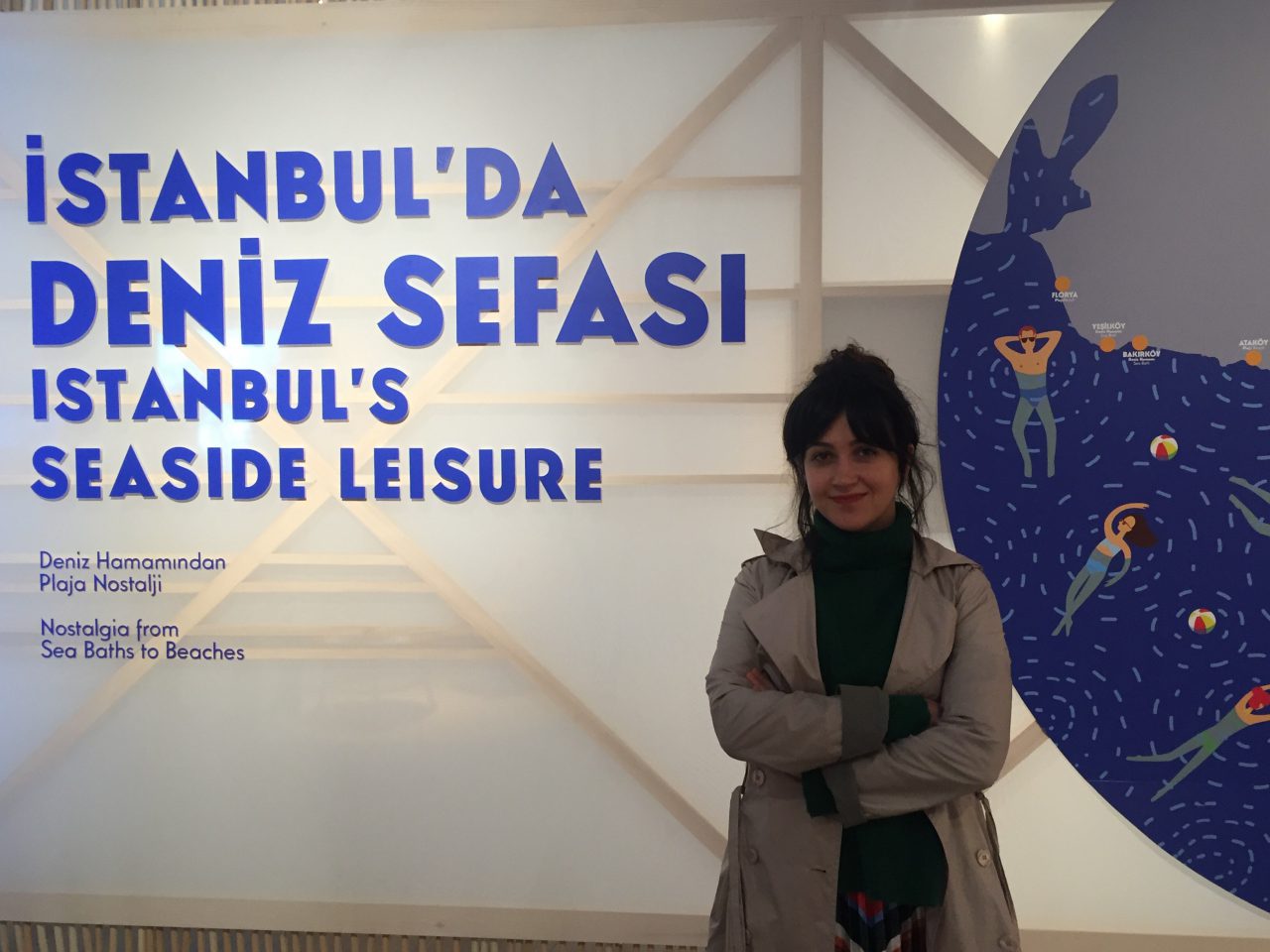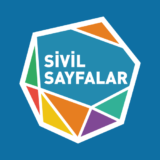From Sea Baths to Beaches: Women and the Sea

While touring the exhibition “Istanbul’s Seaside Leisure: Nostalgia from Sea Baths to Beaches” in Pera Museum, we talked to Zeynep Merve Uygun, who wrote her doctorate thesis on the production of halal holiday resorts, sea life in Istanbul and social transformation. Her animation “Zigzag”, which is also a part of her thesis, was screened 17th !F Istanbul Independent Film Festival.
Zeynep Merve Uygun has many awards for documentaries. Her film “Zigzag”, which is also a part of her doctorate in Trans-disciplinary Documentary Film at the University of Edinburgh in Scotland, was screened in !f Istanbul Independent Film Festival. Curated by Prof. Zafer Toprak, “Istanbul’s Seaside Leisure: Nostalgia from Sea Baths to Beaches” is like an animated historical background of Uygun’s thesis. As well as beaches increased especially during the republic period, there are also many paintings, gravures and photographs from Ottoman period which explain why the concept of “sea bath” was used.
While preparing the historical background for her thesis, Zeynep Merve Uygun benefited much from Gökhan Akçura’s archive and Burçak Evren’s book called “Istanbul’s Sea Baths.” Concept of “sea bath” was first seen in Evliya Çelebi’s Book of Travels. Reason for using the word “bath” is mostly because those places were arranged not for swimming but just for taking a dip. Uygun thinks that practice is kind of a premature prototype of today’s halal tourism model. Here is what Prof. Zafer Toprak says about sea baths: “Along with the 19th century, sea baths came into existence but they were only used to be freshened. People only took a dip into sea and that was all. Then, doctors stepped in and started to make a record of swimming. They defined an age limit for sea bathing.” According to the rules on sea bathing, male and female baths had 100 meters between, no alcohol was allowed and covering clothes was worn. Zeynep Merve Uygun says there were 62 of those baths in the late 1800s in Istanbul.
People in Istanbul mingled more with the sea after the arrival of Belarusians. Non-muslim people’s connection with the sea was also a factor. Prof. Zafer Toprak indicates that Belarusians fled from Bolshevist Revolution started swimming in Florya -where they were settled. First, Istanbulites watched then followed. Their love for the sea began. Atatürk’s interest in sea, his photographs in swimsuits, was also a factor. “Russians were first to discover Florya but Atatürk was the one who enlivened it. Florya sea mansion was built for him. Its surrounding was arranged as public beach. Atatürk got closer with the people via the sea,” says Prof. Zafer Toprak.
“Objects, clothes, places of holiday and meaning assigned to it can give us important clues of a society,” says Uygun and advices everyone to visit the exhibition in Pera Museum.
From sea baths to beaches: historical background is only a part of Uygun’s doctorate thesis. Regarding the concept of holiday from Ottoman period to present, she analyses how the place and the body interacts and transforms itself. Zeynep Merve Uygun also analyzes concepts such as women’s beach, halal holiday, haşema (a two-piece swimsuit with a close-fitting hood) and veiled women’s relations with the sea.
Uygun focuses on the representation of a body that cannot be shown in her thesis’ visual section- consisted of 6 short films. She did field studies for five years in different women’s beaches. She says she experienced the phenomenon “camera is male” over and over during her studies. “I normally go to the beaches, have chats with women, we swim, sunbathe and dance together. But when I am with my camera, it is not possible for me to enter there, which is very understandable,” she explains. Because she could not project te colorful atmosphere on the beaches, she used different disciplines of visual arts -such as animation, marbling- to narrate the scenes.
Uygun thinks that instead of despising, neglecting or orientalizing women’s beaches, we need to think about the power of the relation between women and sea and what kind of social places women’s beaches are. Her story of her thesis: “I went to Esenköy -the first big halal holiday resort of Turkey- in 2000 thanks to a friend of mine. While we were there, suddenly the gendarmerie attacked the beach -on the excuse of reactionary activities- and torn down the already worn-out walls. I was thinking with my teenage mind ‘Why would it be a crime to swim?’ but then I saw a group of women already in search of a new place. It was very interesting for me because those women turned an undisclosed corner to a new beach, right the day after! It was a group of women from all ages, jumping from the reefs under a burning summer sun, with their colorful arm floats, lifebuoys and prayer rugs. They were sea addicts! That picture in my mind made me decide on my doctorate project. It opens new discussions on Turkey’s political and social atmosphere back then. You can see the difference between public space/private spaces is very ambiguous in Turkey. You can see how women can create/transform spaces without paying attention to any kind of prohibition or prevention. You can understand that a monolithic group mentioned as “covered women” includes many different types of human profiles. In short, thinking about holidays and the sea can open us a new world of different perspectives. Then, I conceptualized the subject a bit more and decided to analyze how space and body interacts and transform each other in Turkey, with a regard of holiday concept from Ottoman to present.”
Trying to represent a body that cannot be represented was the toughest thing for her documentary. “I could not violate women’s rights who I worked with; I had to respect their beliefs. On the other hand, I was obliged to project their experiences to the audience in a creative way. That’s why I used alternative narration for my documentary. However, there were many obstacles on the way. I had trouble in finding a fund, because I was not a member of any institution or group. I made funding by selling my home-baked cakes. My son Miro was only 6 months old during that time. Sometimes I was breastfeeding while also deciding on the design of animation. So, the conditions were tough, the road was long,” she explains her story.
Kaynak: Deniz Hamamlarından Plajlara; Kadınlar ve Deniz…

Bizi Takip Edin